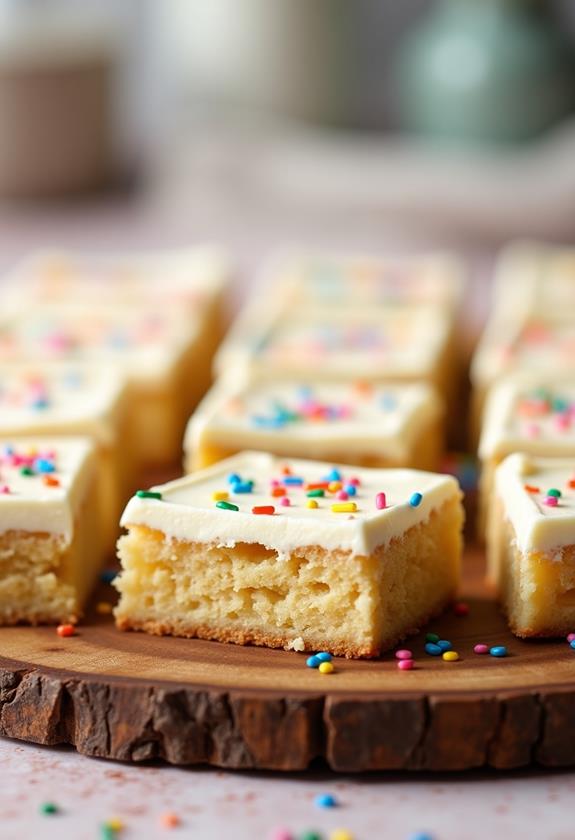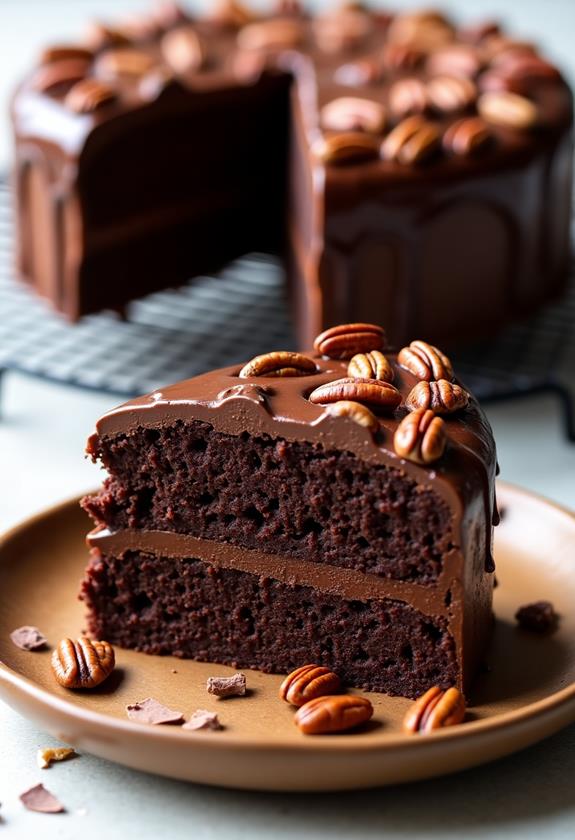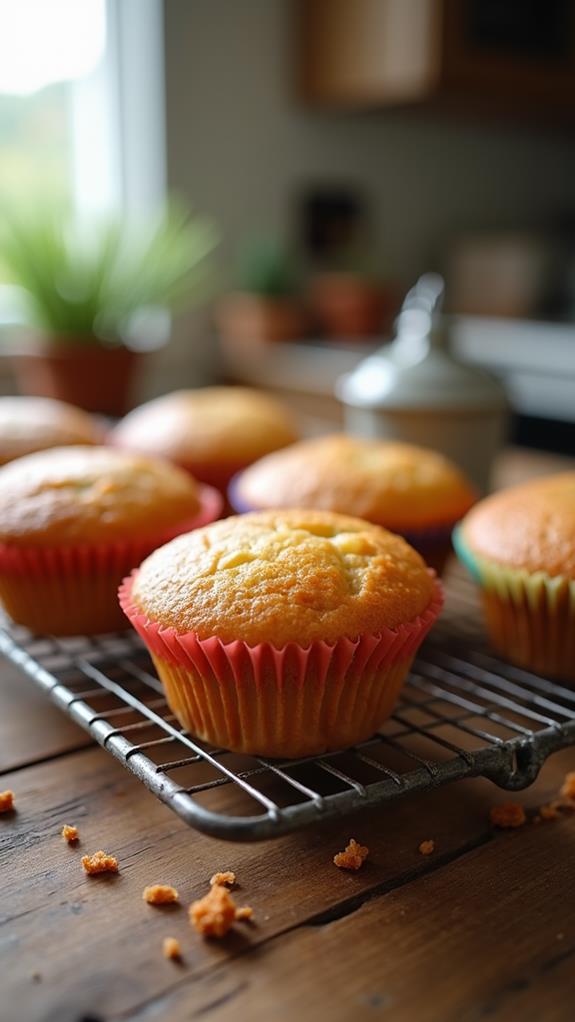Lemon Bars With Shortbread Crust Recipe

Nothing beats the perfect balance of tart and sweet that comes from a well-made lemon bar. These irresistible treats feature a buttery, crumbly shortbread crust topped with a bright, tangy lemon filling that will make your taste buds dance with joy.
I’ve perfected this recipe over years of baking, and I can confidently say these lemon bars will become your new favorite dessert. Whether you’re hosting a summer gathering or simply craving something citrusy and delightful, this recipe delivers every single time.
What are Lemon Bars With Shortbread Crust?
Lemon bars are a classic American dessert that combines two distinct layers to create dessert perfection. The bottom layer consists of a rich, buttery shortbread crust that provides a sturdy foundation and complementary texture. The top layer features a smooth, creamy lemon curd filling that’s both tart and sweet.
The magic happens when these two components come together during baking. The shortbread crust becomes golden and crispy while supporting the luscious lemon filling that sets into a perfect custard-like consistency. The result is a dessert that offers the best of both worlds: the comfort of shortbread cookies and the bright, refreshing taste of fresh lemons.
Ingredients List for Lemon Bars With Shortbread Crust
For the Shortbread Crust:
- 2 cups all-purpose flour
- ½ cup powdered sugar
- 1 teaspoon salt
- 1 cup unsalted butter, cold and cubed
- 1 teaspoon vanilla extract
For the Lemon Filling:
- 4 large eggs
- 1½ cups granulated sugar
- ¼ cup all-purpose flour
- ⅓ cup fresh lemon juice (about 3-4 large lemons)
- 2 tablespoons lemon zest
- ¼ teaspoon salt
- Powdered sugar for dusting (optional)
How to Make Lemon Bars With Shortbread Crust: A Step-by-Step Guide
Creating perfect lemon bars requires attention to detail and proper timing. Follow these steps carefully to ensure your bars turn out beautifully every time:
1. Prepare Your Pan and Oven:
- Preheat your oven to 350°F (175°C).
- Line a 9×13 inch baking pan with parchment paper, leaving some overhang for easy removal.
- Lightly grease the parchment paper with butter or cooking spray to prevent sticking.
2. Make the Shortbread Crust:
- In a large mixing bowl, whisk together the flour, powdered sugar, and salt until well combined.
- Add the cold, cubed butter and vanilla extract to the dry ingredients.
- Using a pastry cutter or your fingertips, work the butter into the flour mixture until it resembles coarse crumbs with some larger butter pieces.
- The mixture should hold together when pressed but still look crumbly.
3. Press and Pre-Bake the Crust:
- Transfer the crust mixture to your prepared baking pan.
- Press the mixture firmly and evenly into the bottom of the pan using your hands or the bottom of a measuring cup.
- Bake the crust for 18-20 minutes, or until the edges are lightly golden brown.
- Remove from oven but keep the oven on – you’ll need it again soon.
4. Prepare the Lemon Filling:
- While the crust is baking, prepare your lemon filling.
- In a large bowl, whisk the eggs until smooth and well beaten.
- Add the granulated sugar and whisk until the mixture is light and slightly thickened.
- Sift in the flour and whisk until completely smooth with no lumps.
- Add the fresh lemon juice, lemon zest, and salt, whisking until everything is perfectly combined.
5. Assemble and Bake:
- Pour the lemon filling over the hot, pre-baked crust.
- The hot crust will help the filling set properly and prevent a soggy bottom.
- Return the pan to the oven and bake for 22-25 minutes, or until the filling is set and no longer jiggles when gently shaken.
- The top should be lightly golden but not brown.
6. Cool and Finish:
- Remove from oven and let cool completely in the pan at room temperature.
- Once cooled, refrigerate for at least 2 hours or overnight for best results.
- Before serving, dust with powdered sugar if desired and cut into squares using the parchment paper overhang to lift the bars out.
Substitutions and Variations
If you want to customize your lemon bars or work with dietary restrictions, here are some excellent substitutions and variations:
- Flour: Use a 1:1 gluten-free flour blend for gluten-free lemon bars, though the texture may be slightly different.
- Butter: Substitute with vegan butter or coconut oil (solid, not melted) for dairy-free options.
- Eggs: For each egg, use ¼ cup applesauce or commercial egg replacer for vegan versions.
- Lemon Juice: Try lime juice for lime bars, or a combination of lemon and orange for citrus bars.
- Sugar: Replace granulated sugar with coconut sugar for a slightly different flavor profile.
- Add-ins: Consider folding in fresh blueberries, raspberry jam swirls, or even lavender for unique flavor combinations.
Common Mistakes to Avoid
When making lemon bars, avoid these common pitfalls to ensure your dessert turns out perfectly:
- Underbaking the Crust: A pale, underbaked crust will become soggy when the filling is added. Make sure it’s golden brown before adding the filling.
- Overmixing the Filling: Gentle whisking is key; overmixing can incorporate too much air and cause cracking.
- Not Straining the Lemon Juice: Pulp and seeds can create an unpleasant texture in the smooth filling.
- Cutting Too Early: Warm lemon bars will be messy and won’t hold their shape. Always cool completely before cutting.
- Skipping the Parchment Paper: This makes removal nearly impossible and can result in broken bars.
How to Serve Lemon Bars With Shortbread Crust
Lemon bars are incredibly versatile and can be served in various ways depending on the occasion. For casual gatherings, simply cut them into squares and arrange on a serving platter. They’re perfect alongside fresh berries and a cup of tea or coffee.
For more formal occasions, consider serving them as part of a dessert spread with other citrus treats. They pair beautifully with vanilla ice cream or a dollop of fresh whipped cream. I love serving them at spring and summer gatherings because their bright, refreshing flavor perfectly complements the warmer weather.
Presentation Ideas for Lemon Bars With Shortbread Crust
To make your lemon bars look as stunning as they taste, try these presentation ideas:
- Elegant Dusting: Use a fine-mesh sieve to dust the tops with powdered sugar just before serving for a classic, bakery-style appearance.
- Garnish with Zest: Add thin strips of fresh lemon zest on top of each bar for extra color and aroma.
- Berry Accompaniment: Arrange fresh raspberries or blueberries around the bars for a beautiful color contrast.
- Individual Servings: Cut into smaller, bite-sized pieces for parties and arrange on individual dessert plates with a sprig of fresh mint.
Lemon Bars Recipe Tips
Here are my tried-and-true tips for making the best lemon bars every time:
- Use Fresh Lemons: Fresh lemon juice and zest make an enormous difference in flavor compared to bottled juice.
- Room Temperature Eggs: Let eggs come to room temperature before using for smoother mixing and better texture.
- Sift the Flour: Sifting prevents lumps in both the crust and filling, ensuring smooth results.
- Test for Doneness: The filling should be set but still have a slight jiggle in the center when done.
- Sharp, Clean Cuts: Use a sharp knife wiped clean between cuts for neat, professional-looking squares.
- Chill Before Cutting: Cold bars cut much cleaner than room temperature ones.
How to Store Lemon Bars With Shortbread Crust
Proper storage ensures your lemon bars maintain their delicious taste and texture. Once completely cooled and cut, store the bars in an airtight container in the refrigerator for up to one week. Layer them between sheets of parchment paper to prevent sticking.
For longer storage, you can freeze the bars for up to three months. Wrap individual bars in plastic wrap and place in a freezer-safe container. Thaw overnight in the refrigerator before serving. I don’t recommend freezing the bars with powdered sugar on top, as it tends to absorb moisture and disappear.
Frequently Asked Questions (FAQs)
Q: Can I make lemon bars ahead of time?
A: Absolutely! Lemon bars actually taste better after sitting overnight in the refrigerator. The flavors meld together beautifully, and the texture improves.
Q: Why did my lemon filling curdle?
A: Curdling usually happens when the eggs are added to ingredients that are too hot, or when the oven temperature is too high. Make sure your filling ingredients are at room temperature before mixing.
Q: Can I double this recipe?
A: Yes, you can double the recipe and use two 9×13 pans or one large sheet pan. Just adjust the baking time accordingly and watch for doneness.
Q: What’s the best way to get clean cuts?
A: Use a sharp knife and wipe it clean with a damp cloth between each cut. Chilling the bars thoroughly before cutting also helps tremendously.
Q: Can I use bottled lemon juice?
A: While fresh is always best, you can use bottled lemon juice in a pinch. However, the flavor won’t be quite as bright and vibrant.
Q: How do I know when the bars are done baking?
A: The filling should be set around the edges and have just a slight jiggle in the center when you gently shake the pan. The top should be lightly golden but not brown.
Conclusion
These Lemon Bars With Shortbread Crust represent the perfect harmony between tart and sweet, creating a dessert that’s both sophisticated and comforting. The buttery shortbread base provides the ideal foundation for the bright, creamy lemon filling that makes these bars absolutely irresistible.
I’ve shared this recipe with countless friends and family members, and it never fails to impress. Whether you’re baking for a special occasion or simply treating yourself to something delicious, these lemon bars deliver every single time. The combination of simple ingredients and straightforward techniques makes this recipe accessible to bakers of all skill levels.
Remember to use fresh lemons when possible, take your time with each step, and don’t rush the cooling process. Your patience will be rewarded with perfectly set bars that cut cleanly and taste absolutely divine. Happy baking, and enjoy every bright, sunny bite of these wonderful lemon bars!






